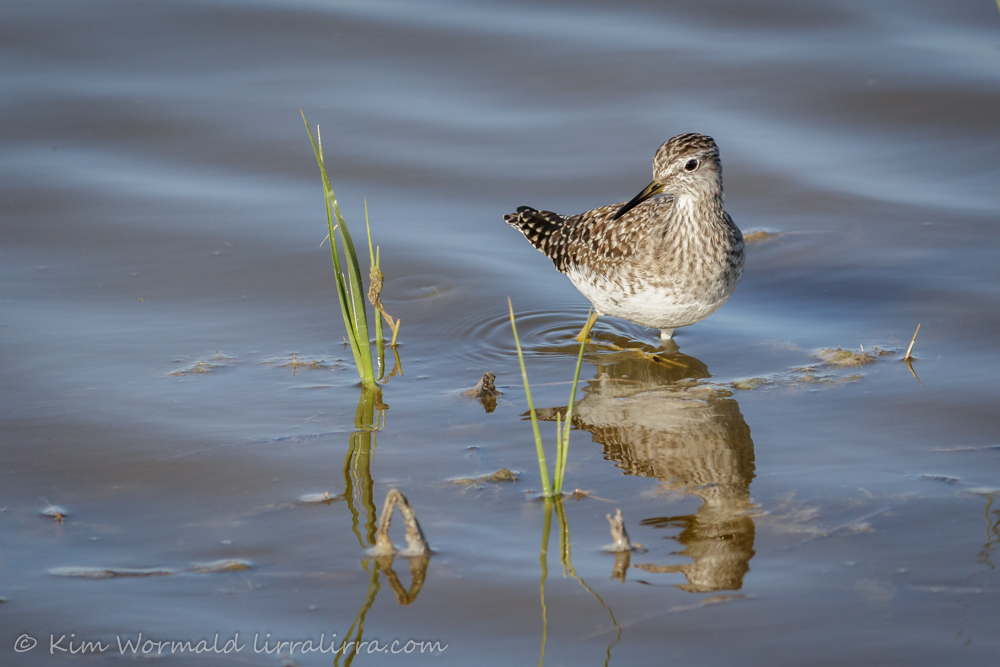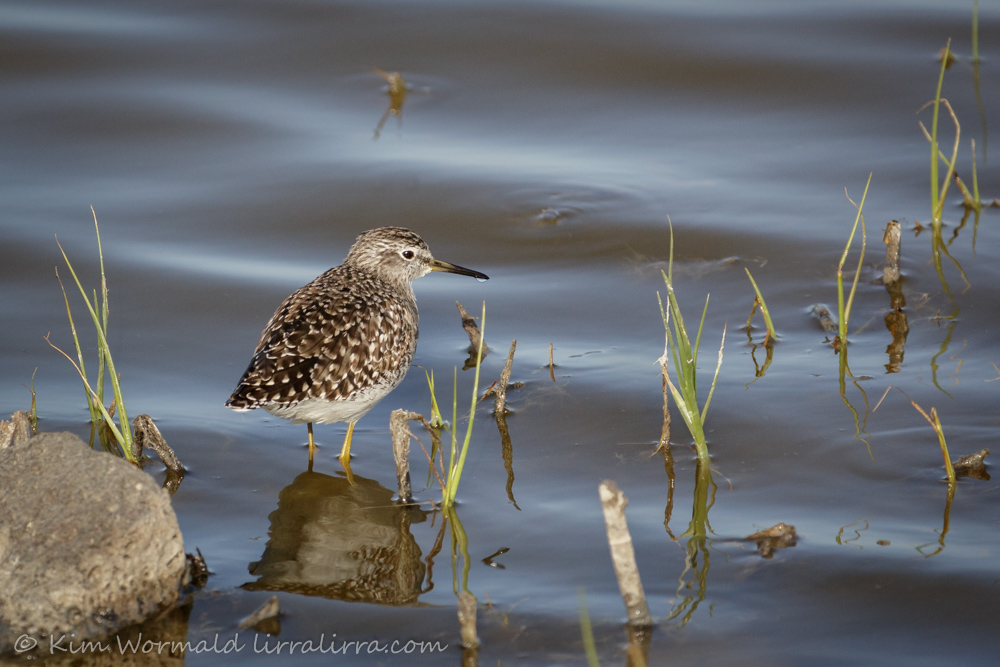I was thrilled to see a pair of exquisite Wood Sandpipers at the Western Treatment Plant recently; and rapt that they were just close enough to capture some images.
Wood Sandpiper (Tringa glareola)
1/1000, f/6.3, ISO 400
Wood Sandpipers are graceful wading birds that feed on aquatic critters by wading through shallow water and probing the mud. They have distinct plumage with their dark brownish-grey backs speckled with light spots; their necks and breasts are mottled while their underparts are white. They have a two-tone bill that is yellow near the base and tapers to a fine, black point. They have yellowish legs and a gentle dark eye ringed with white feathers, and white rumps that are visible in flight.
Wood Sandpiper (Tringa glareola)
1/2000, f/7.1, ISO 800
Wood Sandpipers are more often seen in northern Australia than in the south, they are sometimes seen among flocks of the more abundant Sharp-tailed Sandpiper. This pair were feeding together fairly near the edge of a reedy pond.
April is the latest I could generally hope to see these birds although a handful are known to sometimes stay in Australia over winter. Waders are truly remarkable birds, migrating vast distances to breed in the northern hemisphere. Wood Sandpipers from Australia are believed to breed in east Siberia. They are usually quite slim and as these birds are looking well-fed they may be putting on weight ready to head off on a trip of many thousands of miles.
Happy birding, Kim
Update on the Victorian duck shooting season
Great news this week as the government closed Johnson Swamp, near Kerang, for the remainder of the shooting season due to the presence of protected species including the Australasian Bittern. Thanks to Animals Australia and CADS for continuing to advocate for our native waterbirds, and to the ministers who made the decision.
A resident from northern Victoria was featured on WIN News this week when she visited her MPs office with a dead Pelican that she found on her riverside property. A few weeks ago she took dozens of shot birds to the same place. The news broadcast can be viewed on this link: Confronting scenes in Euchuca
If you’d like to add your voice to thousands of other compassionate environmentalists please contact your MP and/or add your name to (and share) these petitions:
Ban Duck Shooting – ALV petition to Victorian Premier Daniel Andrews
Ban Recreational Duck Shooting – AA petition to add Victoria to the list of states that have already imposed a ban
~ Thank you for visiting and commenting
~ If you would like a weekly email letting you know that lirralirra has been updated please use the ‘subscribe’ box above right
~ If you care about birding ethics you will enjoy the facebook group Ethical Bird Photography



That second image is PERRRRRFECT!
Thank you Sherry!
Hi Kim, two wonderful pictures, nice fauna in Australia. 🙂
We are very lucky to have such beautiful fauna, it’s devastating that the government allows anyone to shoot it. I’m glad you like the images 🙂
Hear hear to all comments above Kim and I am delighted that more wetlands are being closed to ‘recreational shooters’. Let’s all keep the pressure on until the Victorian government ban this obscenity for good.
Thanks Alison, I always appreciate your comments and I totally agree with your thoughts on shooting.
Great shots of the waders. Also appreciate the up to date news on the duck shooting. Hope enough people vote to a ban in Victoria!
Thank you Togram. I agree with you, wholeheartedly, about a hunting ban in Victoria.
I love their little reflections and the drop of water on the bill of the second one! It is remarkable how they travel so far.
Wonderful news about Johnson Swamp, I couldn’t be more relieved and happy!
I was happy to see a photograph of a flock of ducks flying across Johnson Swamp – it’s great to know that they are safe.
I am endlessly fascinated (and awed) by the incredible distances birds travel.
And love the muted elegance of the Wood Sandpipers. Thank you.
Some day soon the obscenity of hunting as a sport will be eliminated.
I read about a wader that travelled 11,500 miles without stopping; it really is phenomenal.